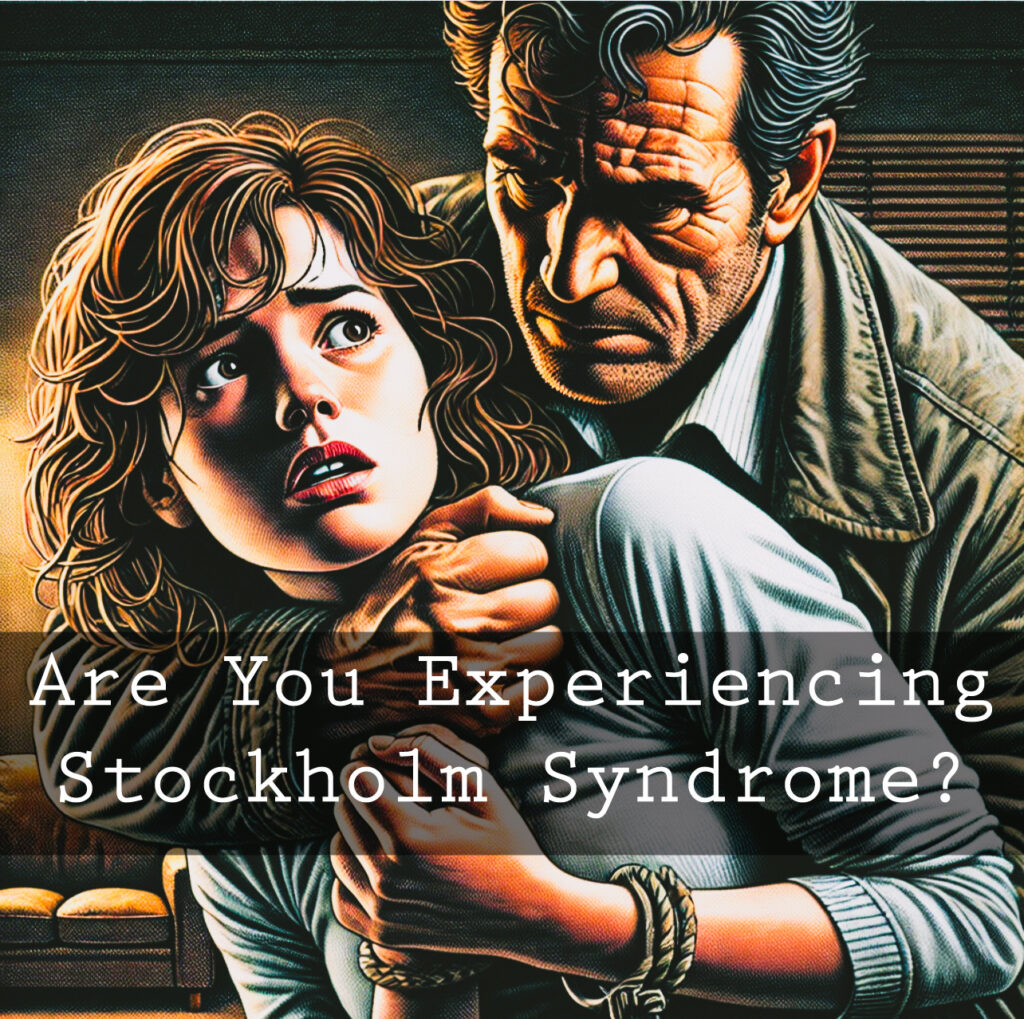
You probably wonder what the meaning of this title is and may ask, what’s this all about? Stockholm Syndrome is a psychological phenomenon in which hostages or abuse victims develop a bond with their captors or abusers. This counterintuitive condition can result in victims defending their captors, refusing to escape, or even aiding in their captor’s actions. The term originated from a bank robbery in Stockholm, Sweden, in 1973, where hostages defended their captors after being held for six days. Since then, it has become a recognized concept in psychology, though it remains a complex and somewhat controversial topic.
Origins and Definition
The term “Stockholm Syndrome” was coined by criminologist and psychiatrist Nils Bejerot following the Norrmalmstorg robbery. During this incident, four bank employees were held hostage by Jan-Erik Olsson and Clark Olofsson. Despite the threat to their lives, the hostages began to identify with their captors, even resisting rescue attempts and later refusing to testify against them.
Stockholm Syndrome is not classified as a mental disorder in medical manuals like the DSM-5. Instead, it is considered a coping mechanism that arises under extreme stress. It involves three key components:
- A severe threat to survival: The victim feels that their life is at risk.
- A perceived act of kindness from the captor: Even minor acts of kindness are magnified in the victim’s mind.
- Isolation from perspectives other than the captor’s: The victim is cut off from outside influences and immersed in the captor’s worldview.
Psychological Mechanisms
Several psychological theories attempt to explain Stockholm Syndrome:
- Survival Instinct: The victim’s primary goal is to survive the ordeal. By aligning with the captor, the victim reduces the perceived threat to their life.
- Cognitive Dissonance: To reconcile the terror of captivity with the captor’s occasional kindness, the victim’s mind resolves this contradiction by developing positive feelings towards the captor.
- Dependency: The captive becomes dependent on the captor for basic needs and emotional support, reinforcing the bond.
Symptoms and Behaviors
Victims of Stockholm Syndrome may exhibit a range of behaviors, including:
- Positive feelings towards the captor: Gratitude for small kindnesses or a perceived understanding of the captor’s motivations.
- Negative feelings towards authorities: Distrust or hostility towards law enforcement or others trying to help.
- Inability to escape: Not taking opportunities to flee, due to psychological dependence or fear of reprisal.
- Defense of the captor’s actions: Justifying or excusing the captor’s behavior.
Cases in Romantic Relationships
Now let’s return to the question I posed initially: are you experiencing Stockholm Syndrome? This syndrome is not just limited to hostage situations; it can also occur in romantic relationships where there is a power imbalance and abuse. In these scenarios, the victim may develop an emotional attachment to their abusive partner. Key examples include:
- Domestic Abuse: Victims may develop loyalty to their abusive partners, often rationalizing the abuser’s behavior and remaining in the relationship despite the harm caused.
- Manipulative Relationships: In relationships marked by manipulation and control, victims may feel dependent on their partner’s approval and affection, reinforcing the emotional bond despite the abuse.
- Narcissistic Abuse: Victims of partners with narcissistic traits may develop a strong attachment, often mistaking their abuser’s intermittent kindness for genuine care and love, despite frequent episodes of demeaning and controlling behavior.
Controversies and Criticisms
Despite its widespread recognition, Stockholm Syndrome is not without controversy. Critics argue that the term oversimplifies complex psychological responses to trauma and can be used to blame victims for their own victimization. Some psychologists prefer the term “traumatic bonding” to describe the phenomenon without implying a syndrome.
Additionally, the lack of empirical research and the difficulty in studying such cases contribute to the debate. Each situation is unique, and not all victims in similar circumstances develop Stockholm Syndrome, indicating that a range of factors, including individual psychological resilience and the nature of the relationship, play a role.
Conclusion
Stockholm Syndrome remains a fascinating and complex psychological phenomenon, highlighting the human mind’s ability to adapt to extreme stress and seek survival. Understanding it better can aid in providing appropriate support to victims of captivity and abuse, ensuring they receive the empathy and care they need to recover. While controversial and challenging to define precisely, Stockholm Syndrome underscores the profound impact of trauma on the human psyche.
